In recent weeks, the frequency as well as intensity of geomagnetic storms has increased. This is perhaps due to the approaching peak of solar cycle 25 which is likely to boost solar activity. Thus, we may see more intense and frequent solar storms, geomagnetic storms, CMEs and solar flares. Now, forecasters have issued a geomagnetic storm alert due to approaching solar winds.
Solar storm News, Tips, Tricks & Ideas
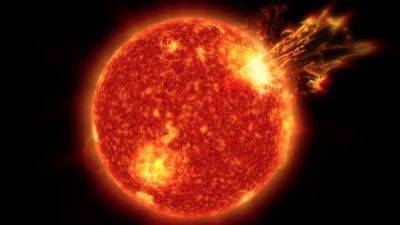
Solar storm watch: X-class solar flare impacts Earth, causing radio blackout over Pacific Ocean
In the last few days, there has been a growing danger of a geomagnetic storm impacting Earth. This development comes just days after the strongest solar storm since 2017 struck the planet, causing a 9-hour-long geomagnetic storm. The Sun has turned volatile in the last few months due to the approaching peak of solar cycle 25. As the peak arrives, solar phenomena such as solar particles, CMEs, solar flares, solar storms and geomagnetic storms are expected to increase both in frequency and severity. Now, NASA, keeping a solar storm watch, has revealed that a solar flare struck Earth recently, causing a radio blackout in the process.
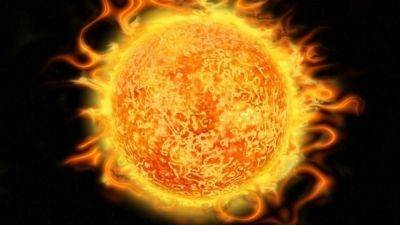
Solar storm alert: X-class solar flares may be hurled towards Earth by sunspot AR3615
On Sunday, a severe geomagnetic storm struck Earth. This happened just days after the Sun unleashed an X-class solar flare and hurled out a stream of boiling hot plasma, known as a Coronal Mass Ejection (CME) towards the planet. This development comes at a time when the solar maximum is approaching, which will likely lead to increasing frequency and intensity of solar phenomena such as solar storms, CMEs, solar flares, geomagnetic storms and more. The latest instance of this devastating solar activity may show up today or tomorrow in the form of an X-class solar flare, raising a potential solar storm threat.
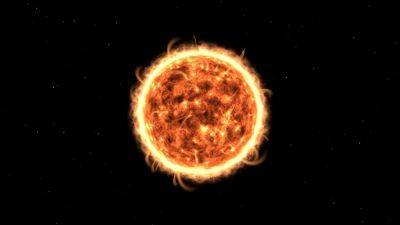
Severe G4 Geomagnetic storm hits Earth! Solar storm could spark radio blackouts, auroral displays
In a recent alert from the National Oceanic and Atmospheric Administration (NOAA), Earth experienced a severe G4 geomagnetic storm on Sunday, indicating potential disruptions to radio communications. The NOAA emphasised that while the storm may fluctuate in intensity, ranging from lower levels to severe conditions, there's no need for panic among the public. However, staying informed about the storm's progression via NOAA's webpage is encouraged.
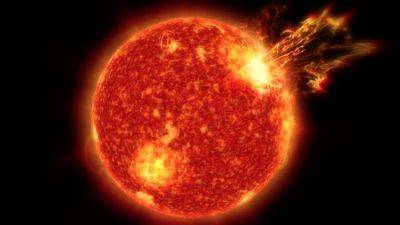
Geomagnetic storm alert issued as CME grazes Earth; Know the solar storm danger today
With Earth going through the Vernal Equinox, solar activity is impacting the planet with increasing frequency. As we approach the solar maximum, it is only expected to increase further. Just a few days ago, the Sun spewed out a Coronal Mass Ejection (CME) towards Earth. It was a huge eruption and was designated as the ‘Canyon of Fire' by NASA. This CME was hurled towards Earth and a potential solar storm danger arose. Now, forecasters have revealed that the CME has indeed impacted Earth and a geomagnetic storm alert has been issued.
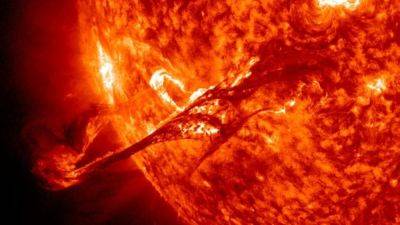
Solar storm alert: CME set to spark Geomagnetic storm soon, beautiful auroras likely
Solar storm alert: On March 17, a big Coronal Mass Ejection (CME) erupted on the surface of the Sun. This CME is now on course for Earth and it could spark a geomagnetic storm soon, raising a potential threat of a solar storm. This development comes just days after another CME grazed Earth's magnetic field, triggering a minor G1-class geomagnetic storm. Know all about this solar storm alert.
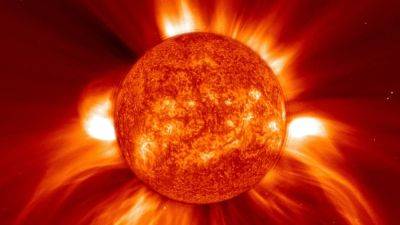
Solar storm watch: Geomagnetic storm on the cards today due to possible CME impact
Solar storm watch: Just a few days ago, Sunspot AR3559 posed a threat of X-class solar flares due to the ‘beta-gamma-delta' magnetic field. This development came amidst a new forecast for solar cycle 25 released by the National Oceanic and Atmospheric Administration (NOAA). As per the predictions, the solar cycle is expected to peak at an intensity stronger than previously anticipated. Now, forecasters have revealed that a Coronal Mass Ejection (CME) could strike Earth soon and it might trigger a geomagnetic storm. Know all about this solar storm alert.
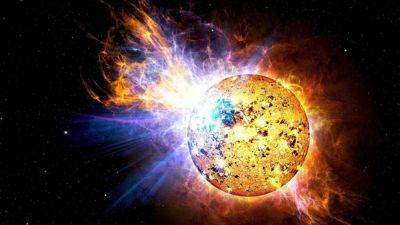
NASA prepares for solar storm surge as new research unravels complexity of solar phenomena
In anticipation of an impending solar storm set to peak by 2025, NASA is intensifying its preparations to mitigate potential impacts on Earth. Recent predictions by the National Oceanic and Atmospheric Administration (NOAA) indicate a revised forecast for Solar Cycle 25, suggesting a stronger-than-expected peak between January and October of 2024.

Geomagnetic storm alert issued! NOAA says solar wind could trigger solar storm on March 9
Just a few days ago, an M-class solar flare hit Earth and sparked a G2-class geomagnetic storm. This is amidst the rising solar activity during the current solar cycle 25, which is expected to enter its peak this year. Consequently, the planet has witnessed a growing number of solar particles, CMEs, solar flares, solar storms and geomagnetic storms in the last few months, and it is expected to rise further. Now, a geomagnetic storm alert has been issued which could trigger a solar storm.
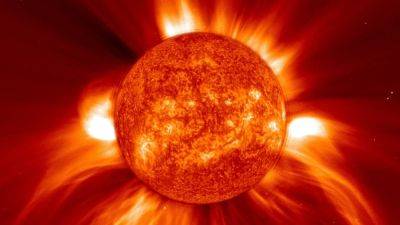
Volatile Sunspot all set to spew out solar flare, trigger a solar storm, reveals NASA
In the last two months, we've witnessed a sharp increase in solar activity. This is due to the approaching solar maximum, a period in the Sun's 11-year cycle where its activity is at its peak. Consequently, Earth has been bombarded with solar particles, CMEs, solar flares, solar storms and geomagnetic storms. Just recently, a G2-class geomagnetic storm sparked auroras over the Arctic Circle. In a new development, NASA says that a sunspot could hurl out an M-class solar flare which could trigger a solar storm. Check details.

Solar storm 2024: Geomagnetic storm sparks stunning auroras around the Arctic Circle
Solar storm 2024: As we approach the solar maximum, the Sun's activity is expected to increase further. The Sun has been showing its might in the last few weeks, with dangerous X-class solar flares spewing out on multiple occasions. All these solar phenomena hold the potential to cause damage on Earth to the electrical infrastructure. Technological instruments are especially at risk during these events, resulting in power blackouts and even disruption of radio communication. Just days after a G1-class geomagnetic storm hit Earth, another triggered auroras on March 3.

Solar storm alert! Sunspot AR3590 sparks aurora anticipation amid geomagnetic storm fears
In a celestial dance that has both scientists and skywatchers excited, the colossal Sunspot AR3590, which recently unleashed the most potent solar flare in over half a decade towards Earth, is now beginning to wane as it rotates to the far side of the Sun. Despite its current retreat, experts warn of a potential resurgence in two weeks, reigniting concerns about a geomagnetic storm. Although a scheduled Coronal Mass Ejection (CME) predicted to interact with Earth's magnetic field on March 2nd has yet to materialize, NOAA forecasters speculate that it might be belatedly en route, possibly impacting our planet on March 3rd.
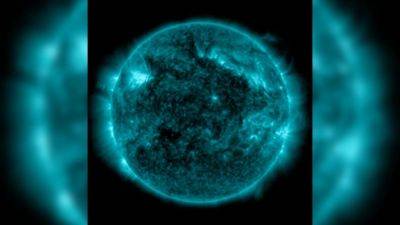
Sun hurls out strongest solar flare since 2017, two other X-class flares! Know the solar storm danger
The current solar cycle is expected to peak this year, according to scientists. Consequently, we've seen an increase in the number as well as the intensity of solar phenomena such as solar flares, solar storms, CMEs and more. In a new incident, the Sun has hurled out as many as three solar flares towards Earth, and one of them is the strongest solar flare of the solar cycle 25! This poses a potential solar storm danger. Know details.
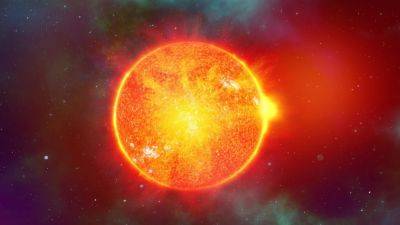
Solar storm alert! Sunspot AR3576 poses X-class solar flare danger to Earth, reveals NASA
In recent months, the frequency of X-class solar flares has increased. This rise in solar activity can be attributed to the approaching peak of solar cycle 25, which is expected to arrive in 2024-25. On December 31, the strongest solar flare in 7 years was captured by the NASA Solar Dynamics Observatory (SDO). It originated from the same sunspot that hurled out another X2.8 solar flare on December 14. Now, another X-class solar flare danger has been observed by NASA. Know all about this solar storm alert for Earth.
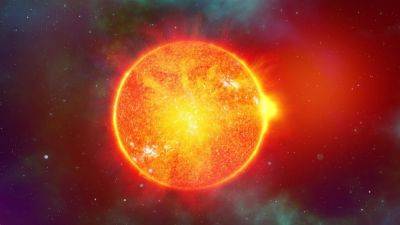
Solar storm! Sun unleashes massive X-class solar flare, triggers radio blackouts on February 9
There is no respite from solar storms for Earth. The Sun emitted a powerful X-class solar flare on February 9, reaching its peak at 8:10 a.m. (1310 GMT), resulting in shortwave radio blackouts across regions of South America, Africa, and the Southern Atlantic. Originating from sunspot AR3576, which had previously exhibited an M-class flare and plasma eruption on February 5, this recent solar flare marked a significant event in solar activity. Fortunately, by February 8, the sunspot had moved away as the sun and Earth rotated, thereby diverting the planet from the solar storm's direct trajectory.

Solar flare danger! Growing sunspot could spark a solar storm today, reveals NASA
Solar storm today: Solar activity has been on a dangerous rise in the last few months, and we've already seen various solar phenomena impact Earth. In the last month, there were two instances of terrifying X-class solar flares hitting the planet, one of which caused a radio blackout in the polar regions for almost 3 days. The Sun has been showing all its might for the past couple of months and as we approach the solar maximum that will likely occur in 2024-25, its wrath is only expected to increase. NASA has now revealed a growing sunspot that could hurl out a solar flare and spark a solar storm. Check details.
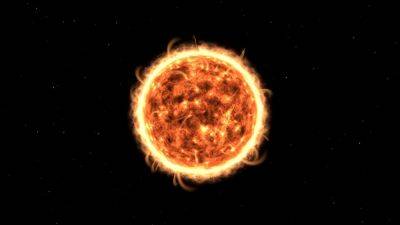
Solar storm warning: Unstable sunspots could hurl out X-class solar flares today, NASA says
Even though we're just 4 days into 2024, we've seen already seen several strong solar flares hurled out towards Earth, sparking a solar storm. On December 31, the Sun hurled out an X-class solar flare that hit Earth just a few days ago, and it is still causing radio blackouts in the polar regions. The Sun has been showing all its might for the past couple of months and as we approach the solar maximum that will likely occur in 2024-25, its wrath is only expected to increase. NASA has revealed that the effects of this rising solar activity are now being seen again as multiple sunspots possess energy for solar flares that can spark a solar storm. Know all about this upcoming solar storm today.
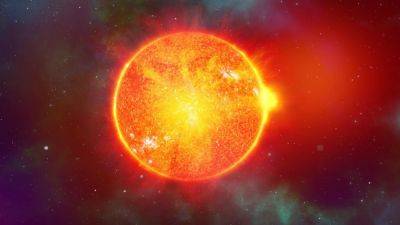
Solar storm approaching Earth soon, set to hit on January 1! Auroras to be visible in high latitudes
With 2024 approaching, the frequency of solar storms, solar flares, geomagnetic storms, and other solar phenomena is set to increase. According to various models and predictions by scientists, the solar cycle 25 will enter the peak of solar maximum in mid-2024. Solar maximum is when the Sun has the highest number of sunspots (active areas of solar flares). These sunspots are what send these vicious solar storms toward the Earth. A recent report has suggested that a solar storm is set to hit Earth and there's a chance that it will generate auroras. Know all about it.
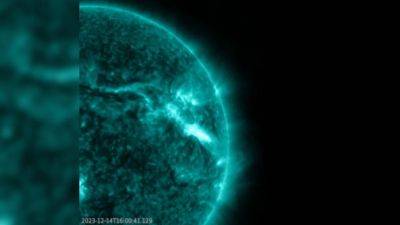
Terrifying X-class solar flare hits Earth, sparks radio blackout across US, says NASA
The Sun has been showing all its might for the past couple of months and as we approach the solar maximum, which will likely occur in 2025, its wrath is only expected to increase. The solar maximum is the period of greatest solar activity during the Sun's 11-year cycle. At solar max, the changes in the Sun's magnetic field result in more solar activity such as sunspots, CMEs, eruptions, and more. The effects of this rising solar activity were seen a few days ago as NASA and the National Oceanic and Atmospheric Administration (NOAA) recorded the strongest solar flare of this solar cycle 25. Know all about it.
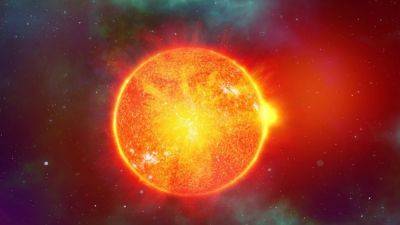
M-class solar flare threat! NASA observatory keeping a watch on dangerous sunspot
Just recently, it was revealed that Earth could be in the firing line of a solar storm as sigmoid eruption was observed on the surface of the Sun. This eruption hurled out a Coronal Mass Ejection (CME) towards Earth, which has the potential to deliver a weak blow to the Earth's magnetic field. However, this isn't the only threat. In a new development, the NASA Solar Dynamics Observatory (SDO) has tracked a dangerous sunspot and it could hurl an M-class solar flare towards Earth. This is the latest solar phenomenon to occur as we move towards the peak of the solar cycle 25. Know all about the M-class solar flare threat.
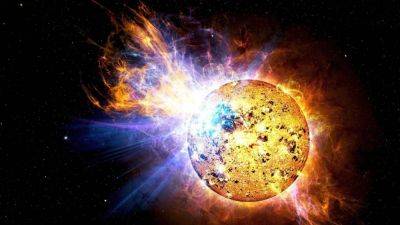
Two CMEs hit Earth, spark extra strong solar storm; NASA model shows more could be on the way
The solar activity on Earth has intensified. Yesterday, December 1, it was reported that a second coronal mass ejection (CME) was headed for the Earth which could turn the ongoing solar storm even more intense, and exactly that happened. A few hours earlier, the second CME made an impact and sparked an incredibly powerful G3-class solar storm. The storm resulted in some of the brightest aurora displays seen across the world. While it has begun subsiding slowly, a NASA model has shown that more CMEs are headed toward the Earth and might make contact with our magnetosphere before the end of the day.
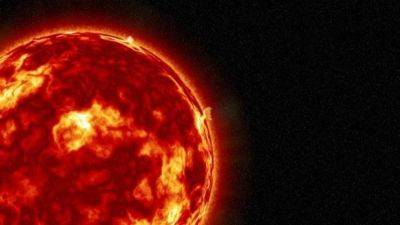
CME strikes Earth, sparks solar storm; but it can get worse, reveals NOAA; here is why
It has been said multiple times that the Sun will pick up solar activity as it ramps up to the peak of its solar cycle, but we are finally witnessing the onset of it. Last month was riddled with solar storms and short-wave radio blackouts triggered by solar flares. Now, things are getting worse. According to the National Oceanic and Atmospheric Administration (NOAA), a coronal mass ejection (CME) hit the Earth a few hours ago and sparked a minor solar storm. While it is not very dangerous, things are going to get worse. The space weather monitoring agency also revealed that another CME is on its way, and it can cannibalize the former to produce a really strong solar storm on Earth later today.
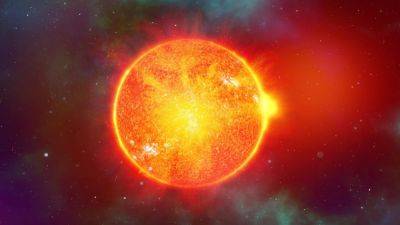
NASA detects CME that can partially hit Earth on Nov 30 and spark solar storm; Auroras expected
On Sunday, a coronal mass ejection (CME) struck the Earth sparking a 15-hour-long solar storm that peaked at G2-class intensity. The impact was so strong that auroras were visible across most of Europe despite it being a moonlit night. As the planet is still recovering from it, NASA models have detected yet another CME that is partially targeting the southern hemisphere of the planet. It can reach the Earth by November 30, and early reports suggest that while the storm is expected to be a minor one, it will still spark auroras at high latitudes.

Sunspots threaten to release a solar storm today directed at Earth
A huge spike in the cases of solar activity has raised concerns among researchers. Sunspots have always been a central point of research for space scientists as they can have a significant effect on our planet. That is why space agencies like ESA and NASA keep an eye on the Sun and solar activity with the help of their advanced instruments.
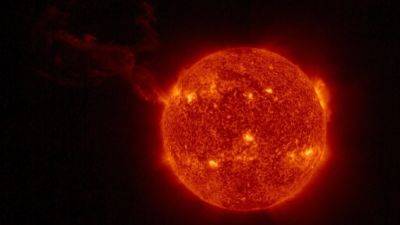
M-class solar flare erupts on the Sun, shows NASA; blackouts triggered on Earth, solar storm possible
Yesterday, a massive sunspot spanning 200,000 kilometers containing as many as 12 dark cores was reported on the Sun. As per information from the NASA Solar Dynamic Observatory (SDO), there was a high chance that it could explode at any moment, and that is exactly what happened just an hour ago. An M-class solar flare was seen erupting on the sunspot, whose extreme ultraviolet radiation sparked a short-wave radio blackout on the Earth. While NASA has not been able to confirm the presence of any Earth-bound coronal mass ejection (CME), this information should be revealed in a few hours' time.

NASA says strong incoming solar winds could spark geomagnetic storm on Earth
The barrage of solar activity continues as we near the peak of solar cycle 25. For the unaware, a solar cycle is an 11-year period where the Sun's activity dips and rises. The lowest point of activity in the cycle is known as the solar minimum, while the period of highest activity is known as the solar maximum. As we approach the solar maximum, Earth is predicted to face more CMEs, sunspots, solar flares, and solar storms.
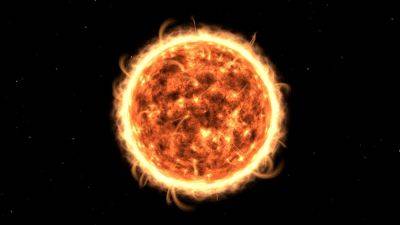
Earth-directed solar flares can erupt soon, detects NASA SDO; aurora-sparking solar storms possible
The Sun has turned volatile and its activity is expected to increase further as the peak of solar cycle 25 comes closer. The current solar cycle has already exceeded expectations, with more number of sunspots already seen than predicted. Earth could be in line to face CMEs, solar flares, solar storms, and other particles with potentially disastrous consequences in the coming weeks and months.

From sparking powerful solar storms to causing forest fires, know the dangers of solar winds
Solar winds have been part of the reason behind the recent series of solar storms that have struck the Earth in the last couple of weeks. They either sparked solar storm incidents or amplified an active storm. But often, we tend to overlook its potential to cause damage when compared to solar flares and coronal mass ejections (CME). However, as per NASA officials and research papers, these stellar winds are capable of not only sparking solar storms but also triggering forest fires, and damaging spacecraft, potentially putting the lives of astronauts in danger.
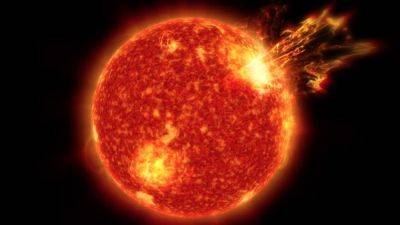
Earth to suffer direct CME hit, new NASA model reveals; To spark solar storm and auroras
Yesterday, the NASA Solar and Heliospheric Observatory (SOHO) detected a coronal mass ejection (CME) that appeared to be coming towards the Earth. The early assessment revealed that it could hit the Earth in the late hours of November 11, although it wasn't clear whether the strike would be a direct one or a glancing blow. Earlier today, NASA ran the data through its prediction model and we have a much clearer picture of what is to come. The CME is now expected to hit the Earth tomorrow, November 12. It is also expected to be a head-on collision, and the solar storm can reach an intensity of G2-class.

NASA SOHO spots CME headed for Earth tomorrow; Solar storm may spark auroras, radio blackouts
Even with just six Earth-facing active sunspots on the Sun, the solar activity in the last fortnight has been more intense than many months combined this year. This is the second most intense solar storm spell we have seen since March when two G3-class storms were spotted in the same month. To make matters worse, it is not likely to stop anytime soon. The NASA Solar and Heliospheric Observatory (SOHO) has detected a halo-shaped coronal mass ejection (CME) headed towards the Earth. The data highlights that it will make strike the Earth tomorrow, November 11, in the late hours, triggering a solar storm that can be as intense as G2-class.

Amazing aurora after solar storm strike! Just check out this NASA image of Utah sky from ISS
Prepare to be captivated by the latest visual treat from NASA as the space agency has unveiled a breathtaking image of an aurora taken from the International Space Station (ISS) after a solar storm strike. The celestial spectacle unfolded above Utah, USA, on a Sunday night, casting a radiant green glow that painted the night sky with an otherworldly charm.
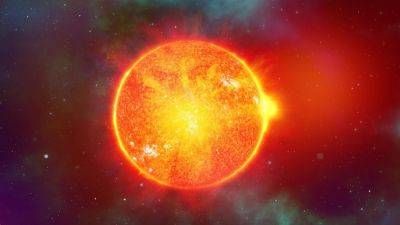
Solar storm creates history? Powerful strike sparks RARE auroras in Peru
There are some things we know about solar storms. First is that they strike the Earth near the polar region, due to the magnetic field lines of our planet. We also know that this is why auroras are primarily seen in the high latitude regions, as due to high concentrations of charged particles in the atmosphere, oxygen and nitrogen get ionized and create these fantastic colors. As the charged particles move down south, the charged particles dissipate and auroras are not visible. However, the solar storm strike on the night of November 5 and early morning of November 6 might well have created history after sparking auroras as far south as the equator itself.
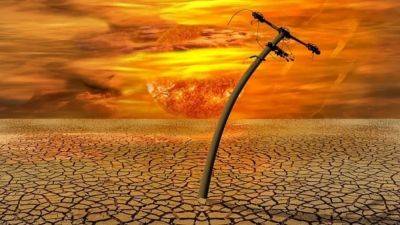
Powerful solar storm strikes! More possible today as solar winds rush towards the Earth
Last week, a forecast revealed that three coronal mass ejections had a probability of striking the Earth early this week. The forecast had given different probabilities based on how different circumstances can affect the intensity of the resultant solar storm. It turned out that in a rare coincidence, the conditions were met to spark the worst-possible solar event, and a G3-class storm ensued yesterday, November 6. While a lot of it has subsided, the solar storm event does not look like it is going to subside anytime soon. A stream of solar winds is headed for the Earth, and it can spark another round of solar storms, that can reach the intensity of G2-class, which is possible today, November 7.
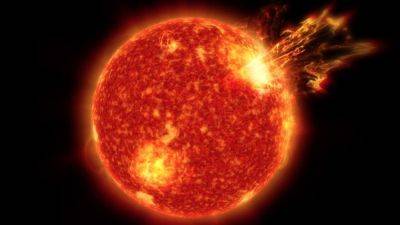
As many as 3 CMEs could hit the Earth today; Solar storm strike likely - Check details
This week's solar storm prediction models claimed that today, November 4, is likely to be the worst affected by solar activities. The prediction will likely come true as three separate coronal mass ejections (CMEs) are headed for the Earth. The first two of them are slightly off-target but the forecast says it can deliver glancing blows to the planet. But things can quickly change if they combine to form a cannibal CME. The third one is the riskiest, which is directly headed for the Earth. Overall, there is a chance that we may see a G2-class storm later today.

NASA detects CME rushing out of ‘canyon of fire’; Solar storm could strike on Nov 4
No solar storm strikes were seen on Halloween, thankfully. Most astronomy enthusiasts must remember the 2003 solar storm that struck on Halloween and resulted in NASA Solar and Heliospheric Observatory dropping altitude temporarily, and Sweden losing power for an hour. But trouble for the Earth is not over yet. A new coronal mass ejection (CME) was released as a result of a magnetic filament eruption on the region of the Sun known as the ‘canyon of fire'. NASA spotted it first, but its initial models predicted that it may miss the planet. But now, the National Oceanic and Atmospheric Administration (NOAA) forecast has said that it will sideswipe us, triggering a solar storm.
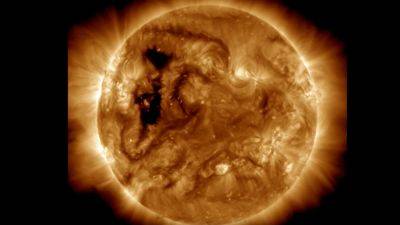
Solar storm strike possible soon, as solar wind stream rushes towards Earth; NASA reveals its origin
Just a couple of days ago, a sneaky solar storm struck the Earth, sparking auroras in the Arctic Circle. The reason for the storm was not known since no coronal mass ejection (CME) was expected to hit the planet. It turned out that a crack opened up in the magnetosphere, allowing solar radiation to easily pass through. Now, another similar incident is on the cards, only at a much higher intensity. A massive hole has opened up on the Sun this time which is releasing a stream of solar winds. It is expected to reach the Earth on October 30, when it can trigger a solar storm, as per the forecast. The NASA Solar Dynamic Observatory images show the hole through which solar winds are escaping.

Solar storm barrage strikes Earth! NASA reveals massive impact effect
The solar storm event on October 20 has become somewhat of a mystery to astronomers and space weather physicists. The storm was triggered by a couple of coronal mass ejections (CME) that sideswiped the Earth and did not make head-on contact with the planet. They left the Sun one after the other in small eruptions, that should not have been carrying a high amount of solar matter or electromagnetic charge, but somehow its impact was far greater than some of the strongest CMEs we have seen in recent times. This is quite confusing as most forecasters had predicted a G1-class intensity for the storm, and while the storm itself was clocked at G1, the aurora display surpassed the intensity seen in that category. And now, a NASA image has been shared by a National Oceanic and Atmospheric Administration (NOAA) institute that shows the widespread impact of the solar storm.
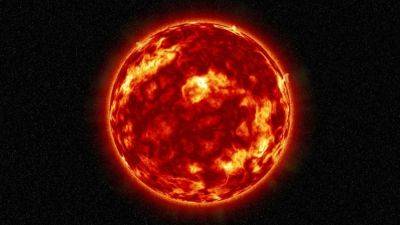
Magnetic filament eruption on the Sun may spark solar storm tomorrow, says NASA
On Monday, October 16, a powerful magnetic filament erupted on the Sun. In particular, the explosion of plasma took place on the active sunspot AR3467, which was earlier reported to have displayed signs of trapping a huge amount of delta energy. The eruption was so massive that it ejected solar matter and plasma into space, which is also known as coronal mass ejection (CME). The CME is now moving in the direction of Earth. While NASA models have assured that a direct hit is unlikely at this point, it is expected to sideswipe the planet, which is still enough to spark a solar storm. The storm is expected to arrive tomorrow, October 19.
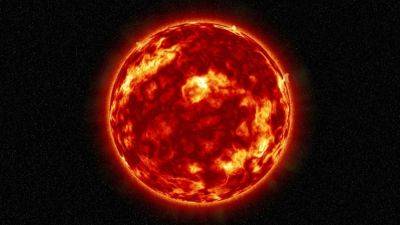
Ahead of solar eclipse, fast-moving solar winds to spark a powerful solar storm today on Earth
Yesterday, it was reported that a co-rotating interaction region (CIR) was forming near the magnetosphere of the Earth due to the intermixing of slow and fast-moving solar winds. The situation is set to worsen today, October 13, as fresh solar winds escaping from a worm-like coronal hole will soon strike the Earth and trigger a powerful solar storm event. This event is expected to take place just before the annular solar eclipse occurs in the early hours of October 14.

Incoming CIR could spark solar storm on Earth TODAY; Know all about it
The Earth this month has seen quite a few impacts due to the solar activities on the Sun, including a couple of solar flare eruptions and consequent radio blackouts, but so far we have not seen any solar storm events. But that is expected to change later today, October 12, as a National Oceanic and Atmospheric Administration (NOAA) forecast has revealed that our planet is likely to be hit by a co-rotating interaction region (CIR) that can spark a solar storm event. Know the likely impact of this solar storm, and why events like CIR occur.

NASA detects massive sunspot that can trigger extreme solar storm activity
If you've been curious about the recent surge in solar activity, it's important to understand that scientists have forecast the upcoming peak of the current solar cycle for mid-2025. This peak, referred to as the Solar Maximum, signifies the period when solar activity reaches its zenith within the 12-year cycle. This also explains the occurrence of two distinct solar flare events in the last 24 hours, both of which resulted in radio blackouts on Earth. And now, NASA's Solar Dynamics Observatory (SDO) has spotted a troublesome sunspot with a strong delta charge that can explode anytime and hurl an Earth-directed coronal mass ejection (CME) to spark intense solar storm activity.
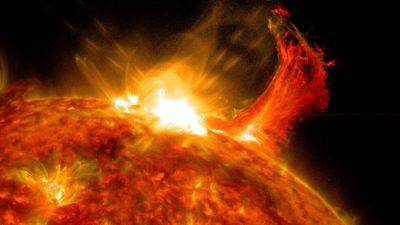
Solar flare erupts on Sun, detects NASA; blackouts over Australia, Solar storm likely
Despite multiple close calls, we have been quite lucky when it comes to solar storms. Even as multiple solar flares have erupted over the last 10 days, only one released a coronal mass ejection (CME) that made its way to the Earth. However, things can now change with the latest eruption that took place in the sunspot region AR3452. The NASA Solar Dynamics Observatory detected the eruption, and as per reports, it took place on the eastern limb of the Sun. If there was any CME directed towards the Sun, there would be another solar storm event in the next 48 hours.
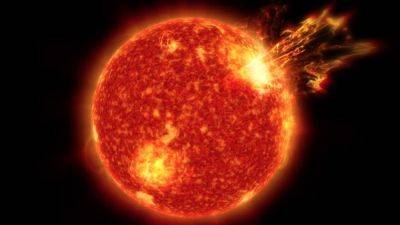
Gigantic CME headed for the Earth, can spark solar storm soon; NASA records the explosion
Yesterday, it was reported that October could see the same amount of solar activity as the previous month. Currently, there are eight different active sunspot regions on the Earth-facing side of the Sun, and any one of them exploding could send terrifying coronal mass ejections (CME). In fact, that is what happened on October 3, when a sunspot exploded and caused a solar flare to erupt, which in the process, hurled a massive CME towards the Earth. Now, as per a NOAA forecast, this CME is expected to strike our planet on Saturday, October 7. Further, NASA has also shared a video of the event that shows the scary moment when the explosion takes place and the CME releases.

3 MASSIVE solar storms smacked into Earth; More to come? NASA reveals the truth
Yesterday, an unstable sunspot named AR3450 was spotted coming towards the Earth. It was estimated that any explosions within this region that could lead to a coronal mass ejection (CME) would be geoeffective and could lead to a solar storm event. However, it has not gone off so far and no solar flare activity has been noted. While astrophysicists are keeping an eye on it, a new report has highlighted that the month of September witnessed as many as three separate solar storm events, with two of them being significantly intense to the point of reaching the mid-latitude regions. With the peak of the 11-year Solar Cycle, the Solar Maximum, approaching soon, will the month of October be worse? We take a look at the data from the NASA Solar Dynamics Observatory (SDO) to know what's coming our way.
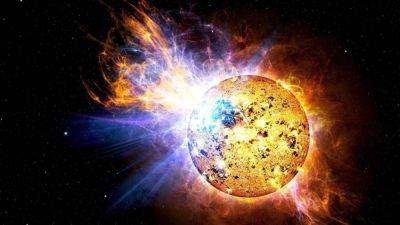
Solar storm ALERT! Unstable sunspot takes aim at the Earth; NOAA reveals incoming danger
While the Earth has escaped solar storms lately, it has been riddled with radio blackouts owing to solar flare eruptions that send extreme ultraviolet radiation toward our planet. Just yesterday, an M2.5-class solar flare erupted, but as it was not Earth-directed, the current predictions do not reveal any threat. However, this is set to change as an unstable sunspot named AR3450 has now appeared directly in front of our planet, and is crackling with solar flares. Space weather researchers believe any explosions now will be geoeffective. On top of that, the National Oceanic and Atmospheric Administration (NOAA) forecast models have predicted a chance for a solar flare eruption today, October 3, that can lead to powerful solar storm activity on Earth.
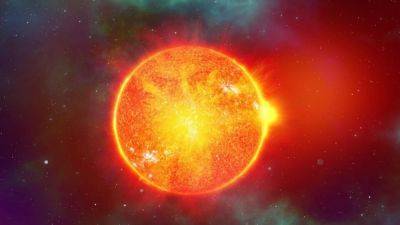
Solar flare eruptions likely soon, but solar storms not seen hitting Earth over the weekend
This weekend promises a stark contrast to the geomagnetic fireworks we witnessed last week. Unlike the previous weekend, there are no looming Coronal Mass Ejections (CMEs) threatening Earth's magnetic field. Our planet's magnetosphere is expected to remain serene and undisturbed from any solar storm.
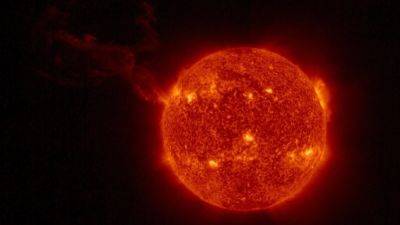
Solar storm fears on Earth rise after M8-class solar flare EXPLODES on the Sun
It appears that the Sun is not going to relent anytime soon. This week has been one of the most explosive ones when it comes to solar activity. We have seen regular solar flare eruptions and radio blackouts every day of the week, and there have been three different solar storm incidents, including a G3-class storm on the night of September 18-19, that resulted in aurora displays as far south as France. But now, another solar storm threat is building up for the Earth. Yesterday, September 20, an M8-class solar flare erupted on the Sun and released a coronal mass ejection (CME) cloud in the same direction as the Earth. Researchers are now trying to confirm whether it can hit our planet or not.
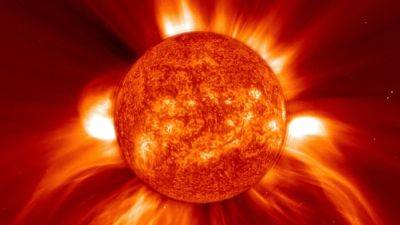
Solar storm STRIKES Earth! Intensely charged CME smashes into our planet, sparks terrifying blackouts
When it comes to terrifying solar storms, the last 24-hour period has been one of the worst since March 2023. The solar storm was triggered by a coronal mass ejection (CME) that was hurled towards the Earth's strike zone on September 18. There were speculations on whether it would hit the planet or not, but not only did it hit the Earth, it also arrived a day earlier than expected. Also, Earth was hit by multiple solar flare eruptions that caused severe radio blackouts. Know the full impact of this solar storm.
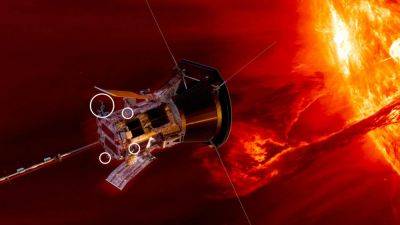
Trouble for Aditya-L1? NASA Parker Solar Probe gets caught in a dangerous CME whirlwind
Solar activity has been rising significantly, with solar storms hitting the Earth left, right, and center with high frequency. But it is not just the Earth that is dealing with such impacts. Recently, NASA shared terrifying footage of the Parker Solar Probe flying through an intense coronal mass ejection (CME) cloud. This was the first time the NASA spacecraft had to endure such an ordeal, and it managed to come out unscathed from the incident and collected some important data along the way. However, such impacts are known to badly damage satellites and spacecraft alike, and with ISRO's Aditya-L1 mission spacecraft reaching its destination at Lagrange 1 point in four months to observe the Sun, there is a fear that it may have to suffer a similar fate.
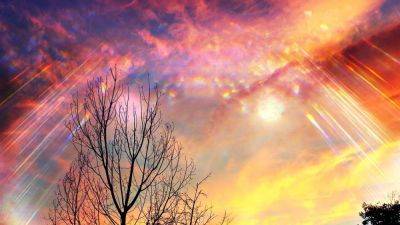
Solar storm alert! A CME just hit the Earth today and more are coming
Solar activity has been on the rise, with recent developments stoking concerns about potential repercussions for our planet. On September 17th, as predicted, Earth was hit by a Coronal Mass Ejection (CME) that was spewed out by the Sun earlier. While the initial impact did not trigger a geomagnetic storm, there's a possibility of minor G1-class storms being sparked today in the coming hours as Earth continues to traverse through the CME.

How Geomagnetic storms affect GPS, Power grids, pipelines, astronauts, even flyers
The sun is a gargantuan dynamic ball of fire, and its actions can affect us here on Earth. One of the ways it does this is by spewing out enormous amounts of energy, which hits the Earth and sparks geomagnetic storms. A geomagnetic storm is a disturbance in Earth's magnetic shield, which in itself protects all life from the harmful rays on the Sun. These storms happen when the sun shoots out shock waves or magnetic clouds that collide with our magnetic field. The most enormous one on record is the Carrington storm from 1859 that actually sparked fires in telegraph offices. Let's dive into how these solar storms impact various aspects of our lives via exploratorium

Double solar flare explosion sparks BLACKOUTS on Earth; Is another solar storm looming?
More solar activity has been detected on the Sun, and it could spell bad news for the Earth. Currently, there is a coronal mass ejection (CME) that is traveling towards us and is likely to strike the planet on Sunday, September 17. But before it can even hit us, more solar flares have erupted on the Sun. Two different M-class solar flares were detected exploding on the notorious sunspot region AR3429 which has already caused multiple solar flares so far. The extreme radiation from the solar flares sparked radio blackouts on the Earth, and scientists are now looking into the fact whether another CME was hurled towards the Earth and if it can spark another solar storm.
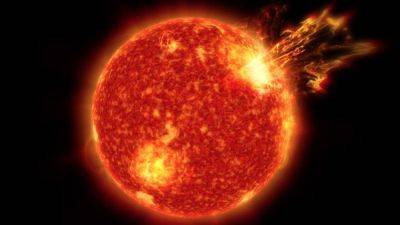
Solar storm warning! A massive CME can strike the Earth this weekend; Check details now
On Tuesday, September 12, the Earth was hit by an unexpected coronal mass ejection (CME) cloud, which triggered a powerful G2-class solar storm on Earth. The storm was moderate in intensity but it was still enough to interrupt wireless communication and trigger bright aurora lights in the higher latitudes. But the solar storm onslaught is not likely to stop anytime soon. Another CME has been unleashed from the Sun and it is again headed for our planet. As per prediction models, it is likely to reach the Earth on September 17 and deliver a glancing blow to the planet. Check the dangers that you should expect.
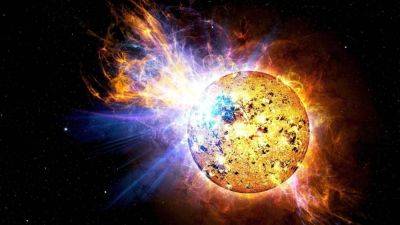
Solar storm ALERT! Solar flare eruption hurls CME towards the Earth; Will it hit?
Yesterday, September 11, two M-class solar flares erupted on the Earth-facing side of the Sun, and the latter of the two managed to release a large coronal mass ejection (CME) into space. According to data from NASA's Solar and Heliospheric Observatory (SOHO), it erupted on the notorious sunspot region AR3429 that recently came into Earth's view. The CME was noted to be in the range of Earth's strike zone and could deliver a glancing blow to our planet sparking a solar storm. But will it hit?
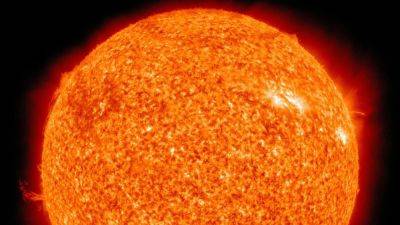
Solar storm fears rise as CME heads for Solar Orbiter; Blackouts hit America after solar flare
Solar activity has been on the rise ever since the start of the month. We have seen multiple solar flare eruptions and a couple of solar storms so far, but luckily they were not major events and their impact was very limited. However, in the last 24 hours, things have started to change. An M2.12-class solar flare erupted on the Sun, which in turn sparked a shortwave radio blackout on both the American continents. But that wasn't the worst incident of the day, as later, it was detected that a powerful coronal mass ejection (CME) cloud is headed for the the Solar Orbiter, the Sun-observing probe by the European Space Agency (ESA), and will strike it today, September 9. These events have raised concerns that an intense solar storm strike on the Earth is not too far away.
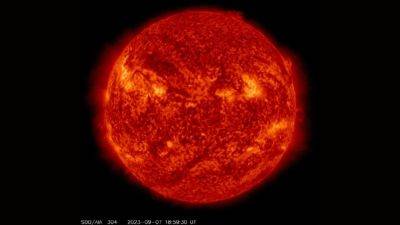
Solar flare WARNING! M2 flare could hit Earth after sunspot explosion
With the solar maximum approaching in the next few years, the Sun's activity is rising and is expected to rise even more. We have already seen a vast number of solar flares, CMEs, solar storms, and geomagnetic storms this year. Astonishingly, the Sun has already exceeded the predicted number of sunspots that were expected in the solar maximum, according to experts. To monitor the Sun's volatile nature, NASA's Solar Dynamics Observatory (SDO) carries a full suite of instruments that help it to observe solar activity.

Blackouts, solar flares, and an impending solar storm, Earth goes through a terrifying 24 hours
With the equinox approaching on September 23, solar activities have picked up again. It is known that during this period, the Earth suffered due to a higher frequency of extreme solar activities due to the magnetic poles of the Earth making a right angle with the Sun. And in the last 24 hours, the Earth has witnessed some intense blows from the Sun. There have been instances of radio blackouts, solar flare eruptions, CME releases, and a possible solar storm that can strike the Earth at any given time. So, let us take a look at what has happened in this brief period and how it affects us.
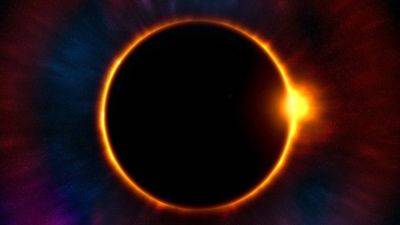
Monster sunspot triggers fears of solar storm strike on Earth; Can spark solar flare eruptions
After an unexpected solar storm event in the late night of September 2, that extended well into the morning of September 3, many scientists believe that such solar activities will now continue to increase till the equinox on September 23. During equinoxes, the Earth's magnetic poles (north and south) are at right angles to the solar wind. This makes the solar wind stronger, which can cause stronger magnetic storms. To increase the troubles, a new sunspot, AR3421, has also emerged directly in view of the Earth. The sunspot contains a mixed polarity magnetic field that can often create powerful solar flare eruptions. In case a large enough coronal mass ejection (CME) is released during the event, it can trigger a destructive solar storm.,
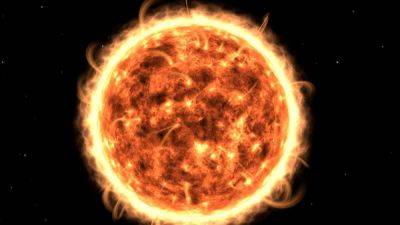
Solar storm warning issued for today; geomagnetic storm may spark auroras, power cuts
A solar storm is heading for Earth today and the Space Weather Prediction Center (SWPC) of the National Weather Service has issued a Geomagnetic Storm Watch for today, September 3, 2023. On this day, Earth may experience a G1 level geomagnetic storm, the mildest on the 1-5 scale. While this geomagnetic storm could cause some aurora displays and minor disruptions in electrical grids, navigation, and communication systems, it is not expected to be a severe event, according to spaceweather.com

Aditya-L1 mission to unravel the secrets of solar storms that destroyed Elon Musk’s satellites
In just a few hours, India's first-ever space mission to study the Sun and the space weather, Aditya-L1, will take off. Once it completes its long journey to its destination of the L1 Lagrange point, it will begin observing the Sun using the seven payloads that will collect data from it. Apart from observing the Sun, its corona, and its dynamic patterns, it will also study space weather, in particular the effect of solar winds and coronal mass ejection (CME) in causing solar storms. Understanding this phenomenon is crucial, as it contains the destructive potential to damage all satellites in space. In fact, it did exactly that in February 2022 when Elon Musk's SpaceX lost 40 of its Starlink satellites to solar storms.

Man films awesome aurora on a plane! Video is viral; know how a solar storm sparks this light show
Auroras, commonly known as Northern Lights, are a rare sky phenomenon that result in stunning streaks of colourful light in the sky near the polar regions. However, there are instances where these flashing lights have also appeared across the world, especially if the solar storm that causes them is of strong intensity. Recently, people on a flight to Europe bore witness to a mesmerizing aurora that was snapped by a user, and the social media post has gone viral since then.
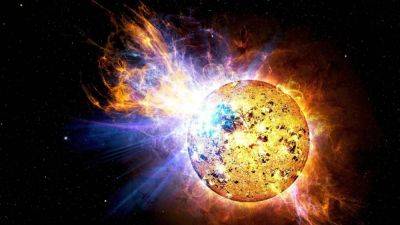
Solar storm ALERT! Magnetic filament erupts on the Sun; CME to strike tomorrow, NASA says
The last ten days have been quite uneventful in terms of Earth-directed solar activity. This was strange given there are still 6 sunspot regions present on our planet's side of the Sun. And even as the Sun nears the peak of its solar cycle in 2025, the last month has passed without any significant eruptions. But with September coming in, solar activities have again picked up. Recently, a massive magnetic filament erupted in the northern hemisphere of the Sun. The eruption resulted in a large cloud of coronal mass ejection (CME) being hurled at the Earth. NASA has confirmed that the CME will strike our planet on September 2.

Solar storm warning: NASA's Mars rover snaps Sun turning, spies dangerous sunspot facing Earth
In an intriguing celestial observation, NASA's Perseverance Rover on Mars has captured a striking view of a massive sunspot, signalling a region of heightened solar solar activity on the far side of the Sun. This sunspot is rotating to face the Earth and the likelihood of a solar storm has just increased manifold.

Sun spits out solar flare so terrifying it is comparable to a billion bombs
In a recent occurrence, the Sun displayed unusual tranquility, following a period of potentially hazardous solar storm activity directed towards Earth the previous week. Solar physicist Keith Strong shared observations revealing that despite the calm on Earth, the Sun's surface was far from peaceful. And it proved that with a super-powerful solar flare.
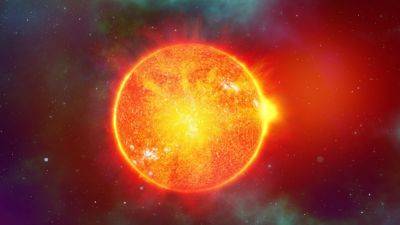
Solar storm threat for Earth rises after a helix CME was seen shooting out of the Sun
This week, the Earth has not been hit by a single solar storm. We have suffered some minor instances of radio blackouts and GPS disruptions due to solar winds, but apart from that, the Sun has remained quiet, even when a highly unstable sunspot, AR3405, has emerged in the Earth's view of the Sun. However, things could be changing. In the late hours of yesterday, strange radio emissions were detected, which is usually a warning sign for a solar flare eruption. Sure enough, a flare was set off and it did release a coronal mass ejection (CME), as per reports. The direction of the CME has not been confirmed so far, but there is a possibility that it could be Earth-bound.
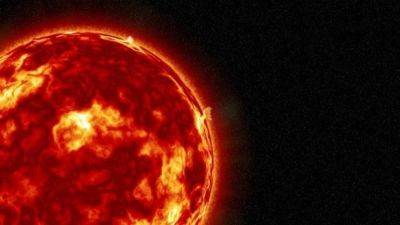
New sunspot sparks fears of terrifying solar storm on Earth
After a bit of a quiet period, the Sun is again gearing up for a period of high solar activity. In the last four days, the sunspots on the Earth-facing side of the Sun have been slowly disintegrating without exploding. But the same cannot be said about a new sunspot region, named AR3405, which will soon be on the Earth-facing side of the Sun. The sunspot has already exploded once and is considered to be brimming with M-class solar flares. Any of them can release a big coronal mass ejection (CME) and spark a major solar storm on Earth. The next few days are going to be concerning for our planet.
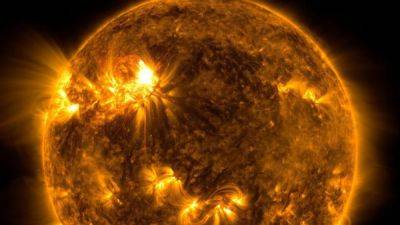
Solar storms can destroy power grids on Earth, satellites in the sky! Why scientists are worried
As the Sun moves towards the solar maximum gradually, scientists are worrying about a once in a century solar storm that can impact Earth, and humanity, severely. We are now experiencing the most active sun so far and it is generating massive solar storms frequently. The peak of solar activities happens every 11 years when the sun reaches the solar maximum. Normally, these solar storms do not severely impact the Earth, but, occasionally, they get so intense that they can generate strong geomagnetic storms that affect all the electrical infrastructure that humanity has created including the power grid and the satellites. NASA believes that if such a solar storm occurs, it could put the safety and livelihoods of people at risk. Now, it is being feared that such a massive solar storm can happen over the next few years.

This 1940 solar storm was so severe it made metal wires crackle; Know all about this ‘Sunspot tornado’
The most recent example of a solar storm that caused damage to Earth's infrastructure was in February 2022 when some of the Starlink satellites launched by SpaceX were trapped in the drag caused by the energized particles in the upper atmosphere, and crashed. However, it is nothing in comparison to the storm that struck the Earth in March 1940. This solar storm was so powerful that it made metal wires crackle due to excessive static electricity and disrupted phone lines and telegraph services for 5 hours. The New York Times called it a ‘Sunspot tornado', and it remains as an example of what can happen when a solar storm really shows its wrath. Let us take a look.

Solar storm strikes the Earth! Sparked by multiple solar flares, it is expected to last 48 hours
This week was filled with high-intensity solar activity. The week began with an X-class solar flare eruption that released two separate coronal mass ejections (CME), which eventually gave way for the cannibal CME that missed the Earth narrowly. Beyond this, there were several M-class and X-class solar flare eruptions on the Sun this week, all of which have released solar particles directed towards the Earth. This excess of solar particles has slowly made its way to our planet and has sparked a solar storm event that may last between 24 to 48 hours. We have not seen a long-term solar storm like this in years. So, what kind of impact it may have on us? Let us take a look.
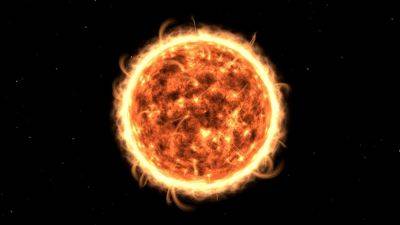
Earth escapes impact of mighty 'X-1' solar flare amidst previous Cannibal flare concerns
In recent developments, Earth has managed to dodge a potentially calamitous encounter with a "cannibal" solar flare, although the planet has been struck by a formidable solar storm capable of causing disruptions to communication systems.

Solar storm scare: Cannibal CME misses Earth, but X1-class solar flare sparks blackouts
The last 24 hours were quite frightening for the Earth, as major solar storm prediction models said that a highly energized cannibal CME could deliver a glancing blow to the Earth today, August 9. However, it never came, leading the scientists to believe that the CME narrowly escaped the planet. Investigations are still ongoing to see whether the CME could have been delayed. However, there is some bad news as well. In the early hours of August 8, another X1-class solar flare erupted and sparked a deep shortwave radio blackout over the Pacific Ocean. Concerns are now rising on whether it will also send another CME towards our planet.
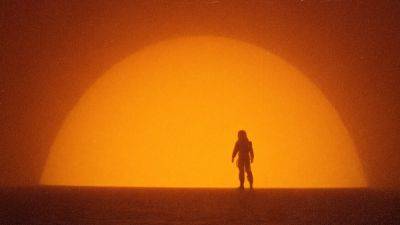
Solar storm threat spikes for astronauts as Sun turns volatile; CME could be fatal
Over the last few months, the effects of the Sun have been felt in the form of CME, solar storms, geomagnetic storms, and solar flares. In turn, these phenomena have sparked further events such as auroras, power blackouts, and disruption of radio communications. But why is the Sun becoming increasingly volatile? This is perhaps due to the approaching Solar Max and the Sun nearing the peak in its solar cycle. As a result, 2023 has also broken a 21-year record for the highest number of sunspots.
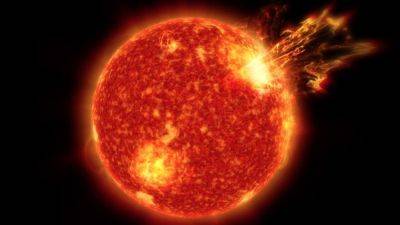
Cannibal CME is headed for the Earth today; Can spark a STRONG solar storm, says NOAA
The X1.6-class solar flare that released two powerful coronal mass ejections (CME) on August 5, has just become even more terrifying. According to a new NOAA (National Oceanic and Atmospheric Administration) model, the two CME clouds have merged, with the second, faster one, overtaking and cannibalizing the first. The result is that the merged entity has become even more powerful. Even a glancing blow from such a cloud can spark a vicious solar storm. The latest forecast says the storm will hit the Earth later today, August 8, and can produce G3-class storms.
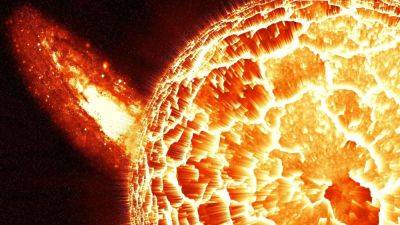
Unexpectedly strong solar storm strikes the Earth; Know the danger
Yesterday, we reported that a coronal mass ejection (CME) was headed for the Earth, and NASA models revealed that it could spark a minor solar storm event. However, things took a turn for the worse when the CME made an impact after midnight, and the initial jolt was measured to be around 22 nT (nanotesla, the unit of magnetic field in the centimeter-gram-second system). The energy released pushed the solar storm from minor to moderate levels, meaning it will have a stronger impact on the upper atmosphere. The storm is currently ongoing, and researchers are tracking the damage it caused.

Terrifying solar storm hits Earth, Mars, and the Moon at the same time!
As the Sun nears the peak of its solar cycle, which is expected to arrive in 2025, researchers continue to worry about the Earth getting hit by a severe solar storm that can damage satellites, disrupt wireless communications, and even damage sensitive electronics on the ground. But it will be surprising for you to know that we have already encountered a massive solar storm like this in 2021. While that particular solar event did not have as intense solar particles, it made up for it by having a ridiculously large size that encapsulated the Earth, the Moon, and Mars at the same time. The details of this solar storm have been revealed by the European Space Agency (ESA). Let us take a look.
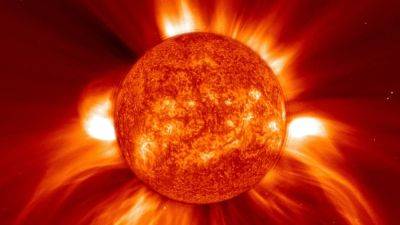
Solar storm to strike the Earth tomorrow, NOAA issues warning; Multiple CMEs approaching the planet
After the lucky escape from a coronal mass ejection (CME) earlier this week, now another solar storm threat is facing us. According to the National Oceanic and Atmospheric Administration (NOAA), a US agency tracking space weather, multiple CMEs can hit the Earth in the next two days between August 4 and 5. These were hurled by an M-class solar flare that exploded on the Earth-facing side of the Sun on August 1. This was part of a major instability event of the active sunspot AR3380. Now, as the CMEs approach, there are fears that it can spark an intense solar storm event, damaging satellites, shortwave radio communication, and more. Check the details.
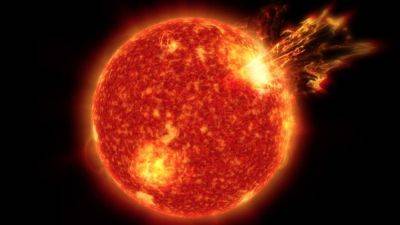
Deadly solar storm coming towards Earth today; CME clouds approaching fast
The last solar activity in the month of July will finally show consequences in August as the coronal mass ejection (CME) cloud that was released during a magnetic filament eruption on July 28 is expected hit the Earth in a few hours today, August 1. The event was a major solar activity that sparked radio blackouts in some regions on Earth. The CME cloud that was released contains both highly charged particles and a high velocity, a combination of which can spark a powerful solar storm today. Check details.

Shocking! CME with SEVERE solar storm potential hits Solar Orbiter satellite at 1500 km per second
After the Earth was struck by two different coronal mass ejection (CME) clouds in successive days, many believed this was the end of the Sun's assault during the week at hand. But another event has shocked the astronomy community. On July 26, a farside flare eruption released an extremely powerful CME and it hit the European Space Agency (ESA) operated Solar Orbiter satellite. Luckily, the CME cloud delivered a glancing blow as it was moving in a different direction, but if it was Earth-directed it could have sparked a severe solar storm event owing to its incredible intensity.
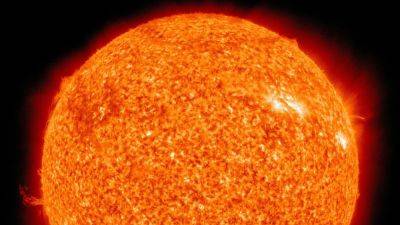
Solar storm BOMBARDMENT! After a CME hit yesterday, another is likely to strike Earth soon
It appears that yesterday's solar storm was not the end of troubles for the planet, as another coronal mass ejection (CME) cloud is expected to strike the Earth later today, July 27. The CME was part of the released mass that escaped the Sun during the solar flare eruption on July 23. Researchers have been tracking the CME, but yesterday, another CME made an impact unexpectedly. It is believed to be another smaller CME that came from a blind spot. The real threat is still yet to hit, as the incoming CME is much larger and can spark an intense solar storm.

UNEXPECTED! Solar storm strikes Earth ahead of schedule; CME hit from blind spot
Yesterday, it was reported that a solar storm will strike the Earth tomorrow, on July 27, after a coronal mass ejection (CME) was seen moving towards Earth. However, the planet has been struck with a solar storm today itself, leading to many researchers being perplexed. Some believe that it is the same CME that somehow accelerated and struck ahead of time, while others believe there might have been another CME that was overlooked by the satellites and hit us from a blind spot. Either way, the solar storm today has created further complications for Earth, as any incoming CMEs will now amplify the overall intensity of the storm.
- 1
- 2
Popular Topics
Our site gametalkz.com offers you to spend great time reading Solar storm latest Tips & Guides. Enjoy scrolling Solar storm Tips & Guides to learn more. Stay tuned following daily updates of Solar storm hacks and apply them in your real life. Be sure, you won’t regret entering the site once, because here you will find a lot of useful Solar storm stuff that will help you a lot in your daily life! Check it out yourself!
